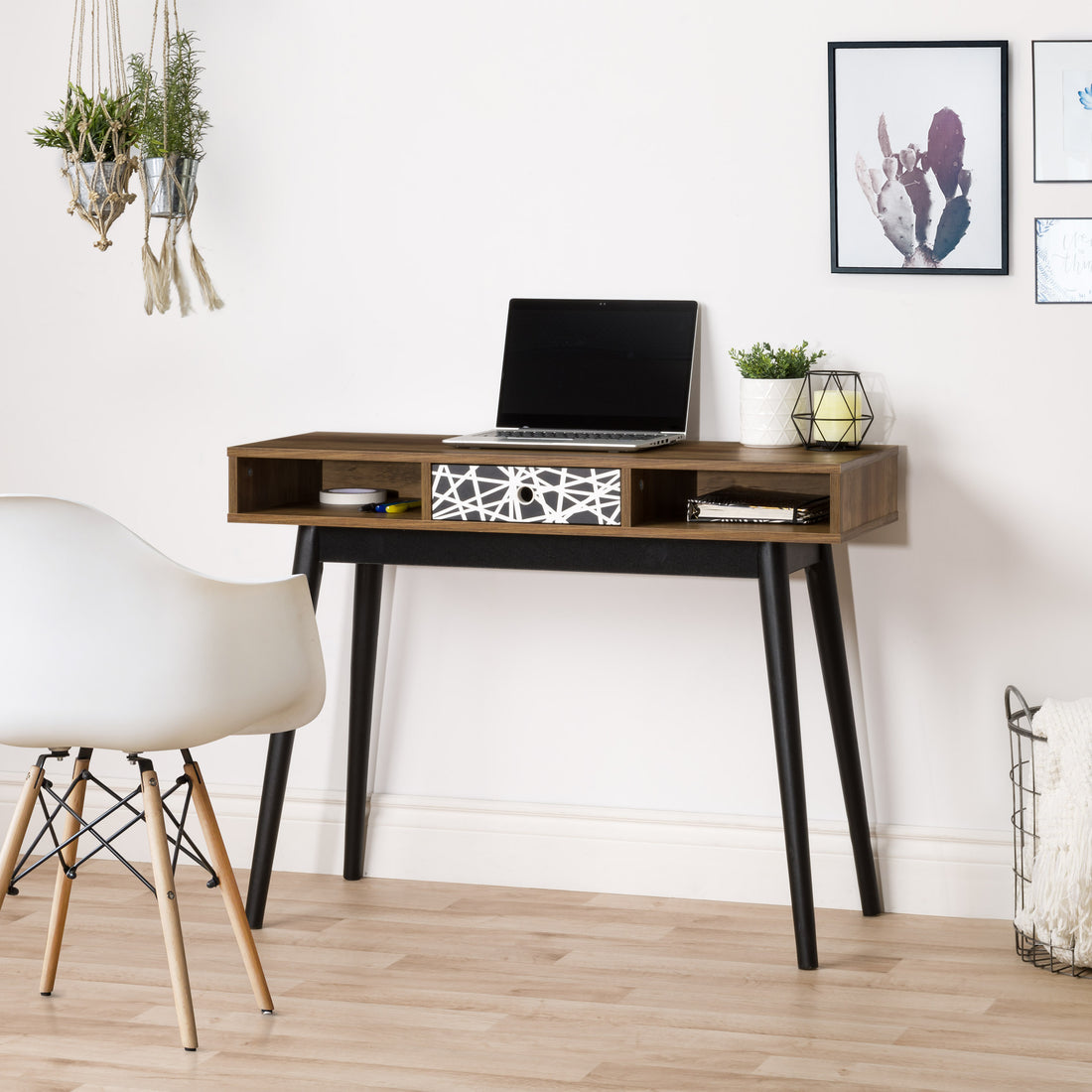
Big Style, Small Spaces: Home Work
Share
Make sure your home office is efficient but also reflects your personality
Working from home has lots of advantages – the office commute is about 30 seconds, you can stick a load of laundry in between conference calls, and you can wear PJs for most of the day. The downside is you’re too close to it to get away, you don’t want to be doing laundry all day, and PJs are really a fashion crime. Whether you work for yourself, or for a company that allows for some work from home, you still need a proper office. To start with, plan by making a list of everything you need in order to work well — natural light, tons of storage space and miles of counter-top.
Where you work is important — preferably a dedicated office space in the guest bedroom, a main floor den, or the basement. This also depends on the kind of work you do; clients dropping in need a place to sit. Laptops and WiFi make it easy to move your office around, even to the back deck. Once you’ve picked a spot, try a space planner to see where the furniture should go, making sure electrical outlets and phone jacks – if you still use a landline – are close to the workspace. Include space for a printer, phone and resource materials. Rarely used items can be stored in the basement or a closet.
CHAIR
You’ll be sitting in this for six to eight hours a day, so get one that adjusts to your specific ergonomics. As pretty as leather is, refrain from buying it because you need something breathable. Chairs range in price from $150 to $2,000, but you can get a decent one for about $300.

DESK
Standard desks are 29 inches high, but 27 inches high is actually ergonomically better for where your arms and hands are while using a laptop. If the desk isn’t adjustable, raise your chair a little. You also need enough workspace to spread out papers; if one desk won’t do, add a second.
A writing desk is preferable to those clunky mid-century office desks – much lighter and easier to move around. Place your desk so you have a view of the room and away from the outdoors. Remember to place it so that light falls over your shoulder.

STORAGE
Drawers in the desk – or in stackable containers on top – are good for having stationery, paper clips, pens, pencils and staplers close at hand. Wallmounted storage minimizes physical and visual clutter.
Wherever you keep your files – on the computer, or an external hard drive, or in file folders – make a habit of culling regularly. If you haven’t used something in a year, toss it. (Except taxes. Those you need to keep for seven years.)
LIGHTING
Natural light is best, especially since windows also provide good ventilation. But if that’s not possible, bump up the overhead and task lighting and add a reading lamp. If there’s no room on the desk, have it wall mounted.

DECORATE
If your home office is visible from the rest of the main floor, try to tie it in decoratively so that it blends in style, colour and theme.
Don’t be afraid of colour, or at least adding colourful accessories. I love white space, but I still like to add colour through accessories – a Navajo blanket, or beautiful pillows on a chair. Incorporate colour as well into stationery, magazine racks, storage containers and so on. Colour affects the way you feel; orange is considered a colour that stimulates creativity, green is restful, blue is calming and yellow makes you happy.
This isn’t the corporate office, it’s your home, so get creative in making it yours, and making a place you look forward to working in. Incorporate art, lamps and accessories that convey your personality. Use what you have – turn a vase into a pen holder, wicker baskets for scrap paper, the dining sideboard for printer, phone and other supplies. Splurge on a chaise – go modern with Eames or Mies, or traditional like a fainting couch — for naps and reading breaks.
SCHEDULE
When you work alone, getting down to work can sometimes be hard; it’s far easier to check out the fridge, stare into space, or run the vacuum through the main floor. Most successful people say that having a consistent routine, one that triggers the brain to get into think mode, is the only way to get things accomplished.
Blog courtesy of Lisa Rogers Source: https://myhomepage.ca/big-style-small-spaces-home-work-feb2018/
